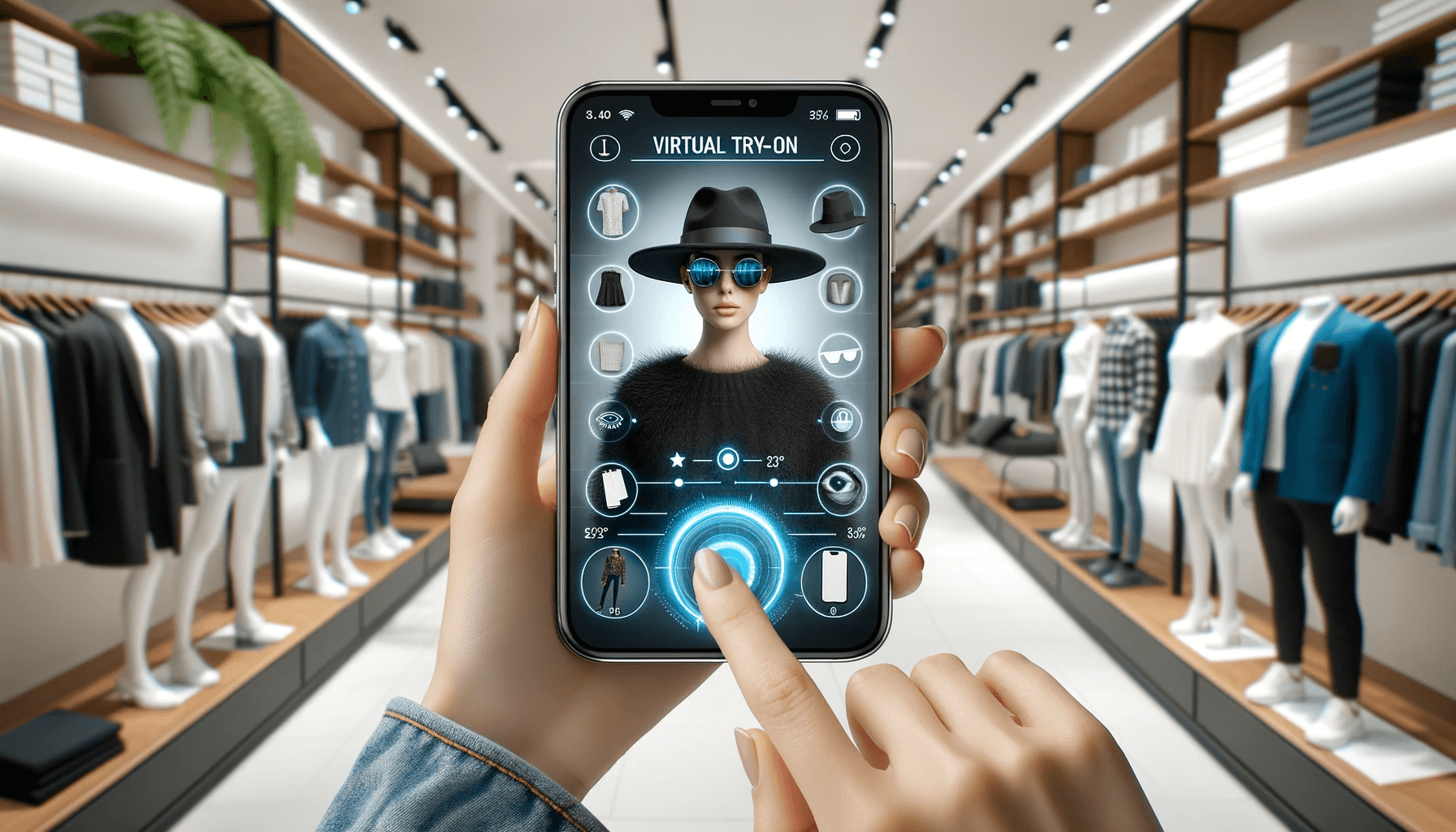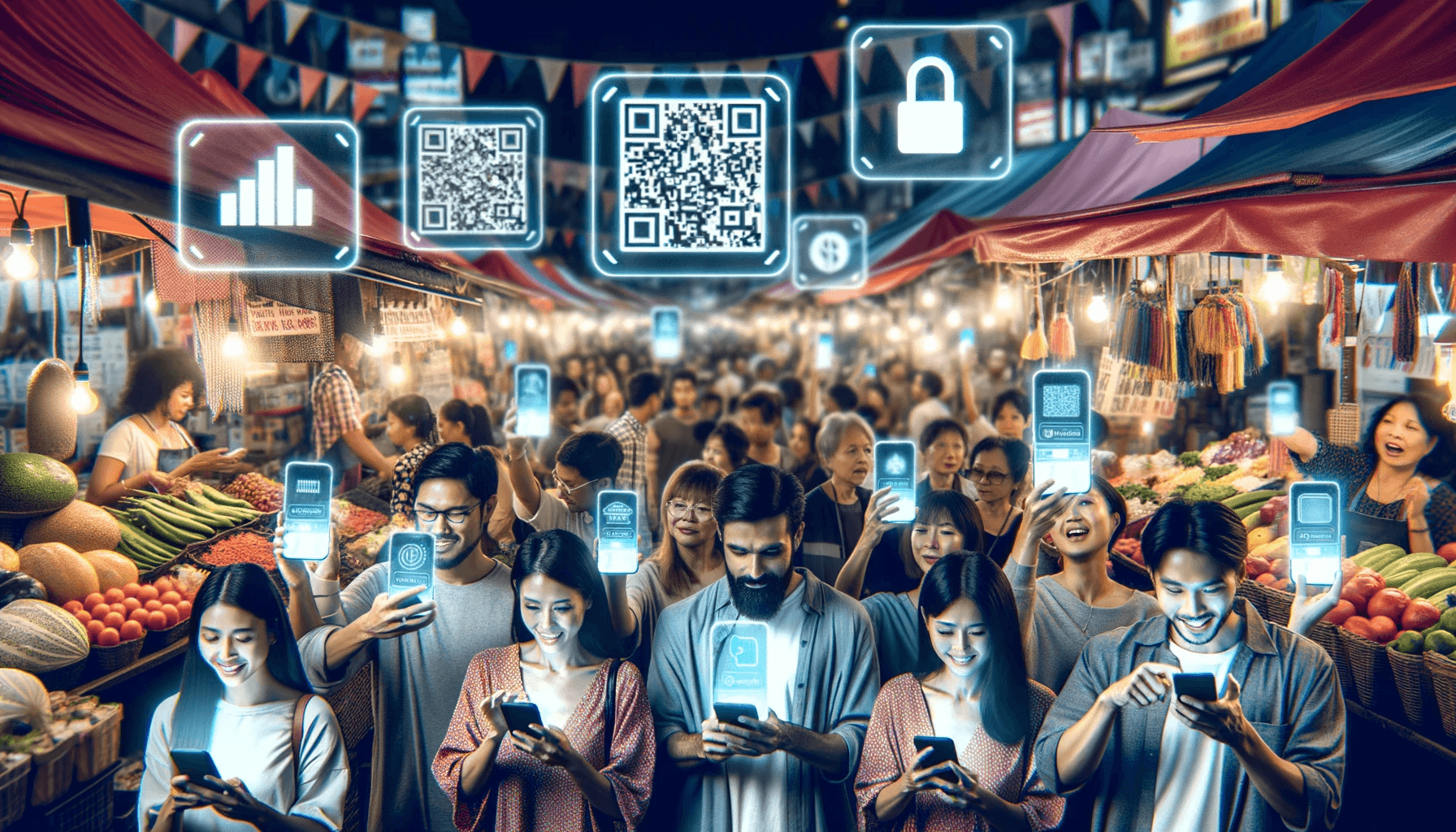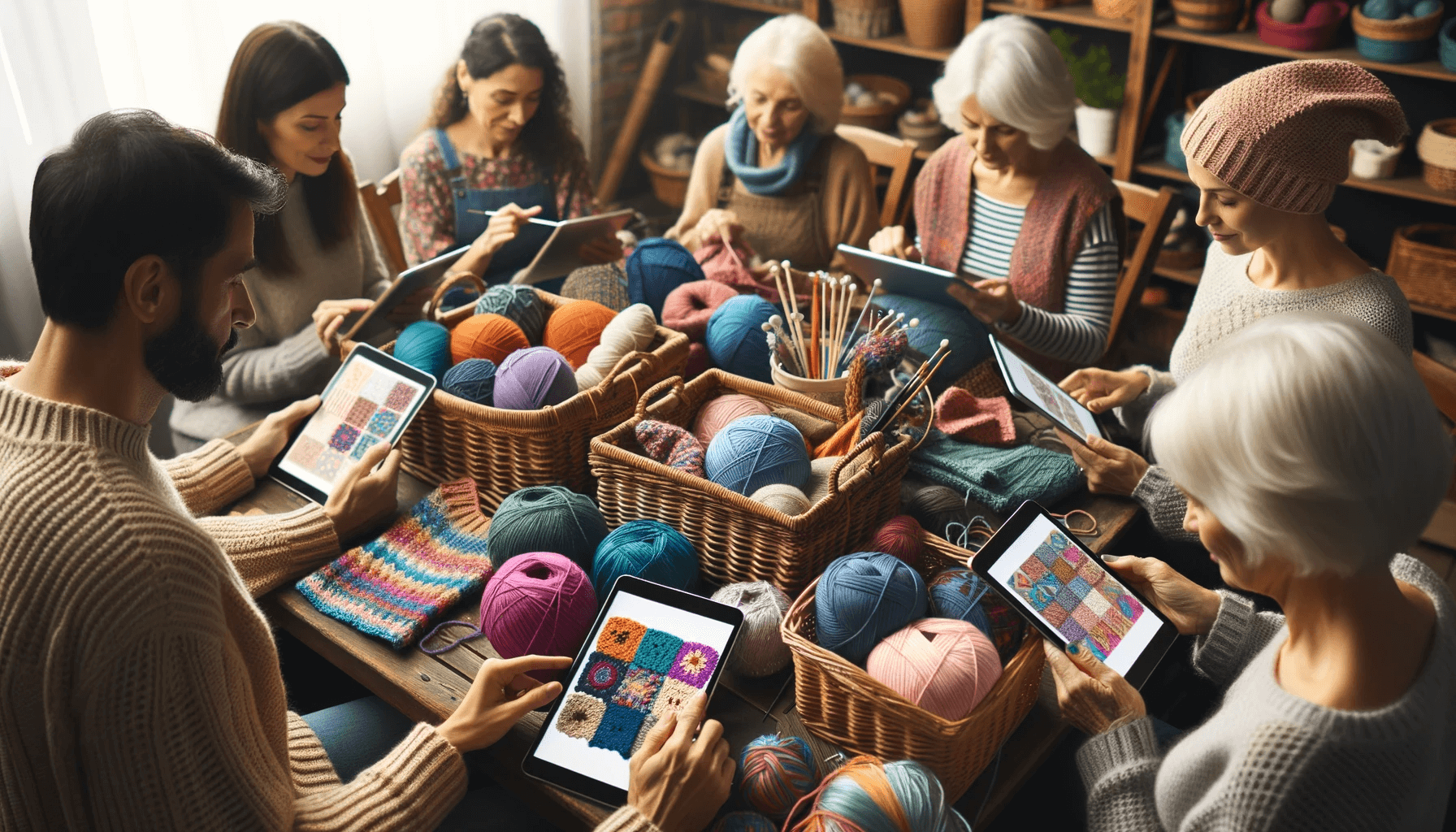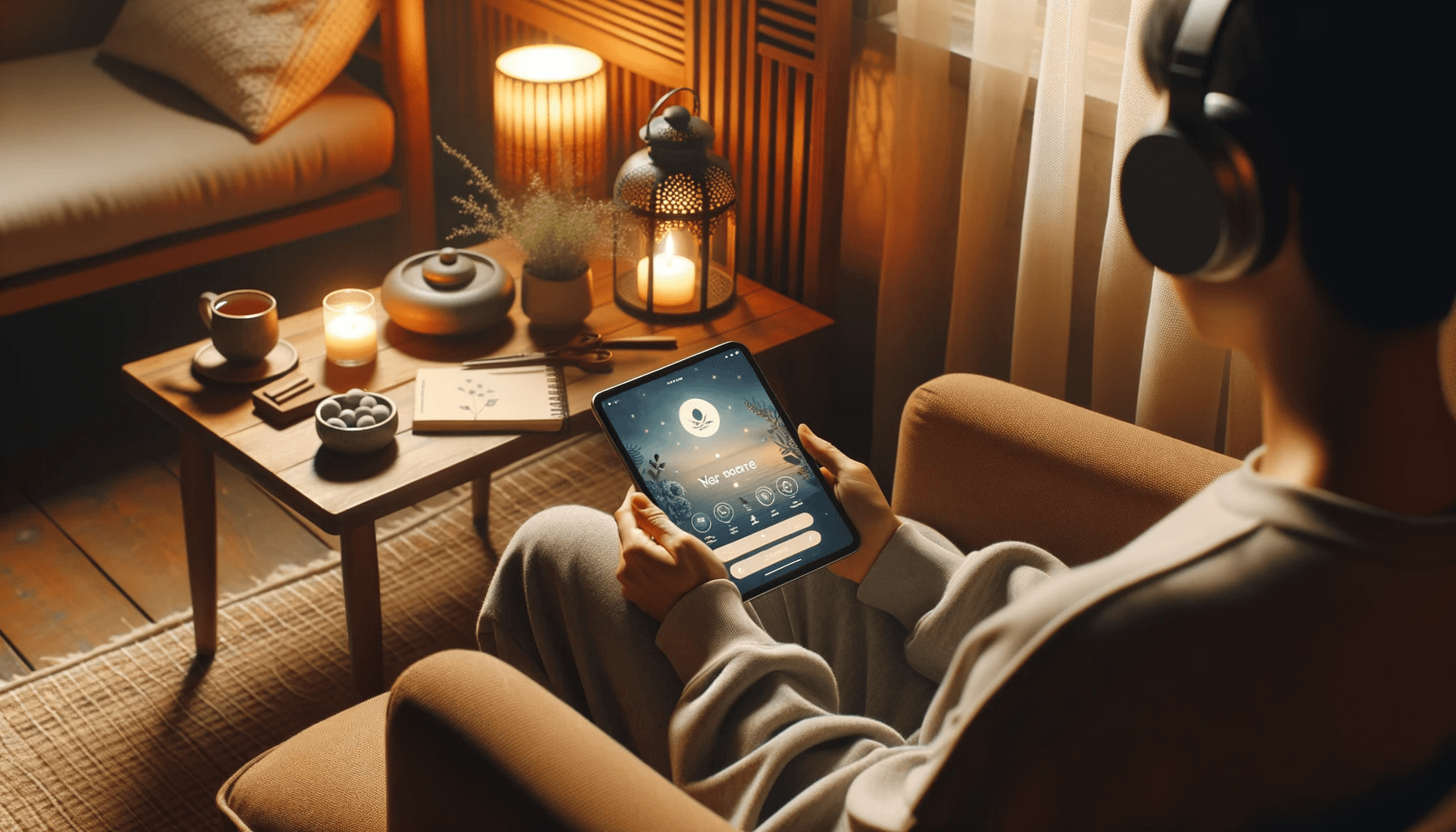Virtual try-on apps have revolutionized the fashion industry, providing a new world of possibilities for shoppers. These apps utilize augmented reality (AR) technology to allow users to virtually try on clothing, footwear, accessories, and even makeup before making a purchase. Virtual try-on apps have gained popularity due to their convenience, practicality, and immersive shopping experience. They work by superimposing virtual garments onto the user’s image, using advanced algorithms to accurately simulate how the clothing will look and fit. The benefits of virtual try-on apps are numerous, including saving time and effort, reducing the need for physical fitting rooms, and boosting confidence in purchasing decisions. Many fashion brands have adopted virtual try-on apps to enhance the online shopping experience for their customers. The future of virtual try-on apps looks promising, with ongoing technological advancements, integration with e-commerce platforms, and potential impacts on physical retail stores. However, there are also challenges and concerns surrounding virtual try-on apps, such as privacy and security issues, as well as the accuracy and realism of virtual representations.
Key takeaways:
- Virtual try-on apps enhance the shopping experience: By allowing customers to virtually try on clothes and accessories, virtual try-on apps provide a more interactive and personalized shopping experience.
- Fashion brands are embracing virtual try-on apps: Many fashion brands have adopted virtual try-on apps to stay competitive in the digital age and offer customers innovative and convenient ways to shop.
- The future of virtual try-on apps looks promising: With advancements in technology, integration with e-commerce platforms, and the impact on physical retail stores, virtual try-on apps are poised to revolutionize the fashion industry even further.
A New World of Fashion: Virtual Try-On Apps
Virtual try-on apps have revolutionized the fashion industry, providing A New World of Fashion for consumers. These apps allow users to virtually try on clothing and accessories before making a purchase, eliminating the need for physical fitting rooms. Benefits of virtual try-on apps include:
| – Convenience: Users can try on multiple outfits from the comfort of their own homes, saving time and effort. |
| – Accuracy: These apps use advanced technology to ensure a realistic representation of how the garments will look and fit. |
| – Experimentation: Virtual try-on apps enable users to explore different styles and trends without committing to a purchase. |
| – Increased confidence: By trying on clothes virtually, users can make informed decisions and feel more confident in their fashion choices. |
What Are Virtual Try-On Apps?
Virtual try-on apps are innovative tools that allow users to digitally try on clothing, accessories, and other fashion items without physically trying them on. These apps use augmented reality (AR) or artificial intelligence (AI) technology to superimpose the selected items onto the user’s image or create virtual models. They provide a realistic preview of how the items will look and fit on the user. Virtual try-on apps enable users to experiment with different styles, sizes, and colors, making online shopping more interactive and personalized. Examples of popular virtual try-on apps include Loom, Zeekit, and Snapchat’s AR try-on feature.
How Do Virtual Try-On Apps Work?
Virtual try-on apps use augmented reality (AR) technology to overlay virtual images of clothing or accessories onto a user’s real-time camera view. Here is a step-by-step guide on How Do Virtual Try-On Apps Work:
- Download the virtual try-on app onto your smartphone or tablet.
- Open the app and grant the necessary permissions for camera access.
- Browse through the available virtual garments or accessories within the app’s database.
- Select the item you want to try on and choose the size and color if applicable.
- Align your body within the designated outlined area on the screen.
- The app will analyze and track your body movements and position in real-time.
- The virtual garment or accessory will be superimposed onto your live camera view, giving the illusion that you are wearing it.
- You can move and rotate your body to see how the item looks from different angles.
- Take screenshots or record videos to save or share your virtual try-on experience.
Pro-tip: Ensure good lighting and wear form-fitting clothing for more accurate virtual try-on results.
What Are the Benefits of Virtual Try-On Apps?
- Virtual try-on apps offer several benefits that enhance the fashion shopping experience. So, what are the benefits of virtual try-on apps?
- Convenience: These apps allow users to try on clothes and accessories virtually, eliminating the need for physical try-ons and reducing the time and effort required to find the perfect fit.
- Accurate Fit: By utilizing advanced technology, such as augmented reality, virtual try-on apps provide accurate measurements and virtual fitting. This ensures that customers get a realistic representation of how the clothing will look and fit on them.
- Enhanced Decision-making: Through visualizing how different outfits and styles look on themselves, users can make more informed purchasing decisions and experiment with different looks without committing to buying items.
- Increased Confidence: Virtual try-on apps help boost customer confidence by allowing them to see how they will look in a particular outfit. This ensures that they choose items that flatter their body shape and personal style.
- Social Sharing: Many virtual try-on apps offer social sharing features, enabling users to share their virtual fashion try-ons with friends and seek their opinions. This makes the shopping experience more interactive and fun.
The Rise of Virtual Try-On Apps in the Fashion Industry
The Rise of Virtual Try-On Apps in the Fashion Industry has greatly impacted the way customers shop for clothing and accessories. These innovative apps are increasingly popular, offering a more interactive and personalized experience. Augmented reality technology is employed by these apps, allowing users to virtually try on different items and make informed purchasing decisions. Major retailers such as Zara and Sephora have wholeheartedly embraced this trend, incorporating virtual fitting rooms and makeup simulations into their apps.
With the rise of virtual try-on apps, customers can now explore various styles and sizes without having to leave the comfort of their homes. This convenience has led to increased customer satisfaction and transformed the way people shop in the fashion industry.
How Have Virtual Try-On Apps Revolutionized the Shopping Experience?
How Have Virtual Try-On Apps Revolutionized the Shopping Experience? Virtual try-on apps have completely revolutionized the shopping experience, offering convenience, personalization, and confidence to consumers.
- Convenience: With virtual try-on, shoppers can try on clothes and accessories from the comfort of their homes, eliminating the need for crowded fitting rooms or multiple store visits.
- Personalization: These apps analyze body measurements and preferences, recommending the right sizes and styles for a perfect fit, saving time and reducing the hassle of returns.
- Confidence: Virtual try-on allows shoppers to see how clothing will look on them before making a purchase, boosting confidence and reducing the risk of buyer’s remorse.
As technology continues to advance, virtual try-on apps will only become more immersive and seamless, providing an even more realistic shopping experience.
Which Fashion Brands Have Adopted Virtual Try-On Apps?
- Louis Vuitton: The luxury brand has adopted virtual try-on apps to give customers the ability to virtually try on accessories like sunglasses and handbags before making a purchase.
- Gucci: Gucci has embraced virtual try-on apps, enabling customers to digitally try on their range of eyewear and makeup products.
- Zara: The popular fast-fashion brand Zara has incorporated virtual try-on apps, allowing customers to virtually try on clothing items and accessories.
- Warby Parker: Known for its eyewear, Warby Parker has implemented virtual try-on apps to provide customers with the opportunity to try on glasses virtually.
- Macy’s: The department store giant Macy’s has joined the virtual try-on trend by incorporating virtual try-on apps, allowing customers to virtually try on clothing and accessories.
How to Use Virtual Try-On Apps
Step into the world of virtual try-on apps and revolutionize your fashion experience. In this section, we’ll uncover the secrets of using these cutting-edge apps to bring your style to life. Get ready for a step-by-step journey through the process of using virtual try-on apps, unlocking a whole new level of convenience and confidence in discovering the perfect fashion choices. So, grab your smartphone and let’s dive into the realm of virtual fashion exploration!
Step-by-Step Guide on Using Virtual Try-On Apps
“`
Step-by-Step Guide on Using Virtual Try-On Apps
Using virtual try-on apps is a simple process that allows you to try on clothes virtually before purchasing them. Here is a step-by-step guide on how to use virtual try-on apps:
- Download and open the virtual try-on app on your smartphone or tablet.
- Create an account or sign in using your existing account.
- Browse through the available clothing options and select the item you want to try on.
- Select your body type or input your measurements for accurate sizing.
- Use the camera feature to scan your body or upload a full-length photo.
- Follow the instructions to align the item properly on your virtual body.
- View yourself in the virtual mirror and adjust the item if necessary.
- Take screenshots or save the images to compare different options.
- If you’re satisfied with the fit, style, and look, you can proceed to purchase the item directly through the app.
Pro-tip: Ensure good lighting and utilize a plain background for the most accurate representation of how the clothing will look on you.
Virtual Try-On Apps: Addressing Challenges and Concerns
Virtual Try-On Apps have revolutionized the world of fashion, allowing us to experiment with different looks in the comfort of our own homes. In this section, we will tackle the challenges and concerns associated with these apps. From privacy and security worries to the accuracy and realism of the virtual try-on experience, we’ll dive deep into the issues that matter most to users. So, let’s unravel the complexities and discover how these apps are striving to address them head-on.
Privacy and Security Concerns
Privacy and security concerns are crucial considerations when utilizing virtual try-on apps in the fashion industry. Users must exercise caution about divulging personal information and ensure that the app they select implements robust security measures to safeguard their data. It is also vital to comprehend the app’s privacy policy and its approach to handling user information. Several recommendations to address these concerns encompass regularly updating the app, employing strong passwords, and being mindful of the permissions granted to the app. By staying informed and taking necessary precautions, users can capitalize on the advantages offered by virtual try-on apps while safeguarding their privacy and security.
Accuracy and Realism of Virtual Try-On
When it comes to virtual try-on apps, the accuracy and realism of the experience are crucial for a successful shopping experience. These apps utilize AR technology to superimpose virtual clothing and accessories onto the user’s body, allowing them to see how items will look and fit before making a purchase. To ensure the accuracy and realism, developers use advanced algorithms and 3D modeling techniques to match the user’s body shape and size as closely as possible. Realistic textures, lighting, and movement simulations further enhance the virtual try-on experience. As technology continues to improve, we can expect even greater accuracy and realism, bringing us closer to a truly immersive and confident online shopping experience. Happy virtual try-on shopping!
The Future of Virtual Try-On Apps in Fashion
Step into the future of fashion with the captivating world of virtual try-on apps. Discover the exciting possibilities as we dive into the unparalleled potential of these apps. From technological advancements and seamless integration with e-commerce platforms to the transformative impact on physical retail stores, this section will unveil the remarkable advancements shaping the future of virtual try-on apps in the fashion industry. Get ready to explore a realm where trying on clothes becomes effortless and immersive.
Technological Advancements and Improvements
Technological advancements and improvements have played a crucial role in the development and success of virtual try-on apps in the fashion industry. Here are some key advancements that have enhanced the functionality and user experience of these apps:
- Realistic 3D Modeling: With improved technology, virtual try-on apps have incorporated technological advancements and improvements, now offering more accurate and detailed 3D models of clothing items. This allows users to see how garments will fit and look on their bodies.
- Augmented Reality (AR): AR technology has benefitted from technological advancements and improvements, becoming more sophisticated. This enables virtual try-on apps to overlay virtual clothing seamlessly onto the user’s image in real-time, creating a more immersive and realistic experience.
- Machine Learning: Virtual try-on apps have incorporated machine learning algorithms, which have been developed through technological advancements and improvements. These algorithms enable the apps to learn from user input and behavior, thereby improving accuracy and personalization. This provides better suggestions for clothing items that match users’ style preferences.
These technological advancements and improvements have made virtual try-on apps more user-friendly, interactive, and reliable, revolutionizing the way people shop for clothing online.
Integration with E-Commerce Platforms
To enhance the online shopping experience, the integration of virtual try-on apps with e-commerce platforms is becoming increasingly popular. This integration allows customers to conveniently try on clothing, accessories, and even makeup virtually before making a purchase. Here are some benefits of this integration:
- Convenience: Integration with e-commerce platforms enables customers to try on products from the comfort of their own homes, eliminating the need to visit physical stores.
- Time-saving: By integrating virtual try-on apps, customers can quickly narrow down their choices, saving time in the decision-making process.
- Increased confidence: The integration of virtual try-on apps with e-commerce platforms boosts customers’ confidence by providing a realistic preview of how products will look on them.
- Reduced returns: With the ability to visualize products on themselves, customers are less likely to make incorrect purchases and experience the hassle of returns.
Pro-tip: When using a virtual try-on app, make sure to use accurate measurements and lighting conditions for a more realistic experience.
Impact on Physical Retail Stores
The advent of virtual try-on apps in the fashion industry has caused a momentous impact on physical retail stores. This influence can be observed through the following aspects:
- Diminished foot traffic: With the convenience offered by trying on clothes virtually, customers are now less inclined to visit physical stores, leading to a decrease in foot traffic.
- Decreased sales: As a greater number of customers rely on virtual try-on apps, physical retail stores may witness a decline in sales since customers are making their purchasing decisions online.
- Requirement for adaptation: In order to stay competitive, physical retail stores must adapt and adopt virtual try-on technology into their stores, thereby creating a seamless online and offline shopping experience.
- Emphasis on customer experience: Physical stores may need to shift their focus towards providing exceptional customer service and personalized experiences to attract customers who prefer the tangible experience of shopping in-person.
To thrive in this new era of virtual try-on apps, physical retail stores could contemplate integrating virtual try-on technology into their stores, providing exclusive in-store experiences, and developing robust omni-channel strategies to bridge the gap between online and offline shopping. By embracing these changes, physical retail stores can persist in delivering value to customers and stay pertinent in the evolving fashion landscape.
Frequently Asked Questions
1. What is virtual try-on technology in the fashion industry?
Virtual try-on technology, also known as virtual fitting technology, allows consumers to try on garments virtually without physically wearing them. It utilizes augmented reality (AR) and artificial intelligence (AI) to provide a realistic visualization of how clothes will look on different body types and skin tones.
2. How does virtual try-on technology enhance the online shopping experience?
Virtual try-on technology enhances the online shopping experience by allowing shoppers to see how clothes will look on them before making a purchase. It helps address fit issues, high return rates, and buyer confidence by providing a more immersive and personalized experience.
3. Are virtual try-on apps only limited to clothing try-ons?
No, virtual try-on technology is not limited to clothing try-ons. It can also be used for trying on accessories like lipstick shades and jewelry. Additionally, it has applications in other industries, such as furniture, where 3D and augmented reality visualization tools allow customers to see how furniture pieces will look in their homes.
4. How are fashion brands utilizing virtual try-on technology?
Fashion brands are utilizing virtual try-on technology to provide customers with a better shopping experience. They are incorporating features like virtual fitting rooms, “magic mirrors” in stores, and smartphone-based try-on apps to allow customers to try clothes virtually, change colors and patterns effortlessly, and make more informed purchasing decisions.
5. What are the benefits of virtual try-on technology for fashion brands?
Virtual try-on technology offers several benefits for fashion brands. It can help decrease return rates, increase buyer confidence, and provide valuable size and fit recommendations to customers. It also allows brands to connect with tech-savvy consumers, create personalized and emotional experiences, and stay competitive in the evolving e-commerce and retail fashion landscape.
6. What is the future of virtual try-on technology in the fashion industry?
The future of virtual try-on technology in the fashion industry looks promising. It is expected to become a standard feature for online shopping, with tech-driven experiences using AR and AI-enabled tools. As consumer expectations continue to prioritize quality over fast fashion, virtual try-on technology will play a crucial role in providing better quality garments, reducing environmental impact, and revolutionizing traditional retail experiences.






